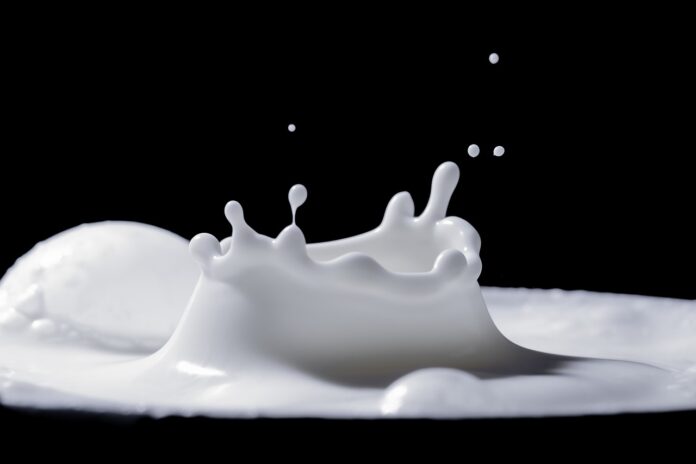Many people drink milk, just like all other mammals. However, nature originally designed milk for feeding offspring, not for adult individuals of any species to consume it, but humanity decided otherwise.
Because people have been drinking milk for generations, most of our bodies have adapted to produce the enzymes necessary for digesting it even in adulthood, not just in childhood. However, lactose intolerance still occurs in some cases.
Facts About Milk
- In China, people hardly drink milk because most Chinese cannot digest it. The reason is simple—while Europeans began drinking milk regularly thousands of years ago, it was hardly consumed in China.
- In Vietnam, it’s hard to find milk for sale without added sugar or fruit flavors.
- Goat’s milk is much more nutritious than cow’s milk.
- A cow continues to produce milk for about 10 months after giving birth to a calf.
- In India, locals regularly drink milk, but not in its pure form; they mix it with various spices.
- Researchers have found that the overwhelming majority of centenarians who lived over 100 years regularly consumed milk and dairy products.
- About half of the adult population worldwide cannot drink milk due to lactose intolerance.
- Horse milk is easier for the body to digest than cow’s milk.
- Sheep’s milk is richer in proteins and fats than cow’s milk. However, sheep are susceptible to brucellosis, so their milk must be boiled before consumption.
- Goat’s milk tastes sweeter than cow’s milk.
- Scientists claim that ancient humans could not drink milk in adulthood because the gene responsible for producing the enzyme to digest it appeared later due to mutation.
- Buffalo milk is much thicker and more nutritious than cow’s milk. Some doctors claim it is beneficial for respiratory system diseases.
- Due to its sedative effect on the nervous system, a glass of warm milk before bed helps you fall asleep.
- The famous ancient Egyptian queen Cleopatra was known for regularly taking milk baths. She claimed that this product helps keep the skin youthful.
- Milk should not be stored in transparent containers because many of its beneficial nutrients are destroyed by light exposure.
- Milk and meat are poorly digested together by the body.
- Strangely enough, milk indeed has the property of souring quickly during a thunderstorm, and this is not a myth. Biochemists have found that long-wave electromagnetic pulses, which can penetrate any substance, are responsible.
- Platypuses are mammals, but strictly speaking, they don’t have nipples. Milk is secreted from the mammary glands and trickles down their fur, which the young then lick off.
- In Thailand, buffalo milk is sold alongside cow’s milk.
- Dishes that have been used for milk should first be washed in cold water and then in hot. If you use hot water first, the milk protein becomes sticky and difficult to wash off.
- The official International Milk Day is June 1.
- In Brussels, on International Milk Day, the famous “Manneken Pis” fountain pours milk instead of water.
- Annual global milk production exceeds 700 million tons.
- On average, a dairy cow produces about 90 glasses of milk daily.
- Milk appears white due to the protein casein it contains.
- A cow’s udder contains between 11 and 23 liters of milk.
- Until the mid-19th century, milk was a frequent source of infectious diseases. Pasteurization—a disinfection procedure invented by French microbiologist Louis Pasteur—helped solve this problem.
- The proteins in cow’s milk can bind toxins in the body. This is why people working in hazardous industries still receive free milk.
- To produce one kilogram of natural butter, 21 liters of milk are needed. A kilogram of cheese is made from 10 liters of milk.
- The World Health Organization recommends consuming 330 kg of dairy products (in milk equivalent) per year.
- Finland has the highest per capita consumption of dairy products, while China has the lowest.
- The young revolutionary Vladimir Lenin, while imprisoned, wrote letters in milk. When dry, it became invisible, and the text could be read by heating the letter over a candle flame.
- To prevent milk from souring, frogs were placed in it in ancient times; their skin secretions have antimicrobial properties and slow bacterial growth.
- Scientists believe that people began consuming milk around 10,000 years ago after sheep and goats were domesticated in the Middle East.
- The fattiest milk in the world comes from whales and seals. The fat content in both cases can exceed 50%.
- Milk can also be used as a cleaning agent. For example, it can remove ink stains or polish mirrors.
- In the stomachs of people who can normally digest lactose, milk is about 98% digested.
- Milk contains around 80 different mineral elements.
- Because a cow’s udder sections do not communicate with each other, the composition of milk obtained from different teats of the same animal may vary.
- Milk is almost 90% water.
